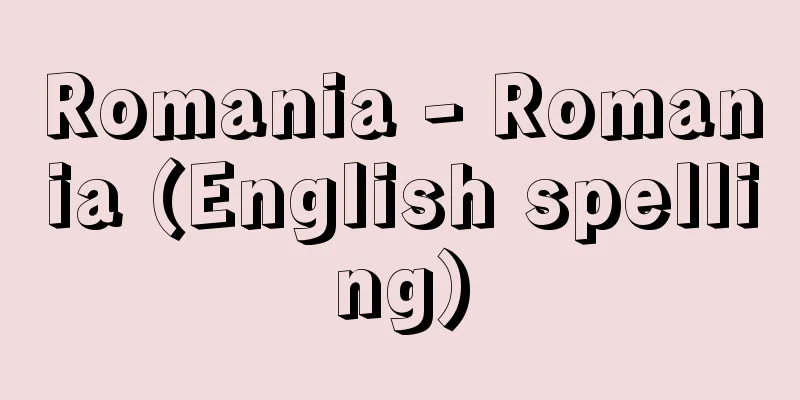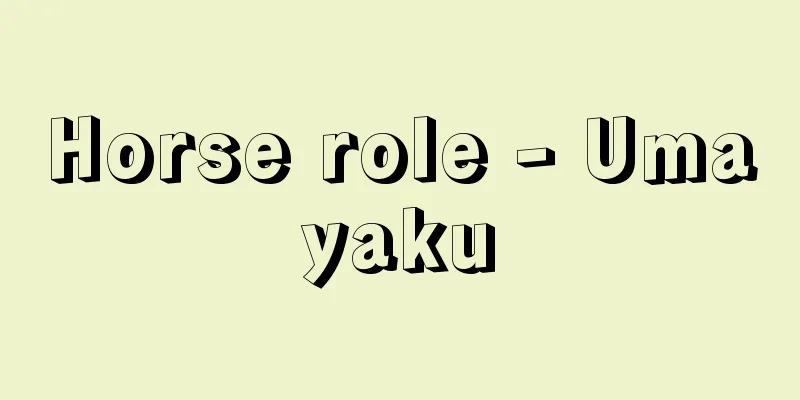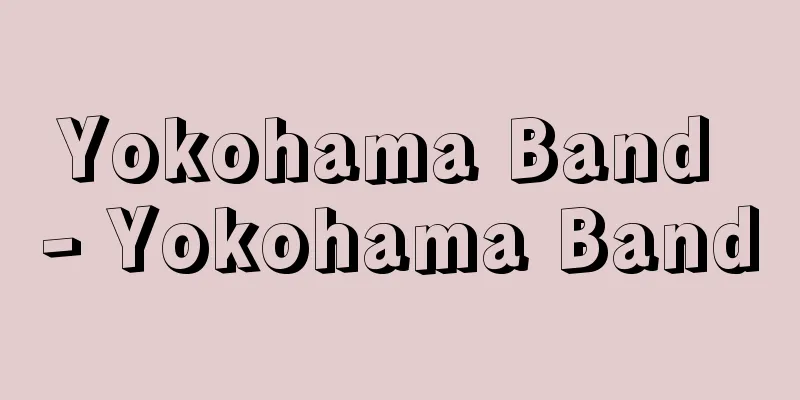Romania - Romania (English spelling)

|
Romania is a republic located in southeastern Europe, in the northeast of the Balkan Peninsula. Its official name is România, or Romnia in Romanian. The country's name means the land inhabited by the Romans, and is derived from the fact that many Romans migrated to this area during the Roman era and Romanized the indigenous Dacians while coexisting with them. The 25th degree east longitude and 46th degree north latitude pass through the center of the country, and the Carpathian Mountains develop in the center like a crown. The Danube River flows along the southern edge of the country, forming the border with Serbia and Bulgaria, and forms a delta at its mouth, flowing into the Black Sea on the southeastern edge of the country. It borders the Republic of Moldova in the east, Ukraine in the north, and Hungary in the west. The country has an area of 238,391 square kilometers and a population of 21,698,181 (2002). The capital is Bucharest, and the national flag is a tricolor of blue, yellow, and red from the flagpole side. The national anthem, "Dešteapta te Romne" (Romanians, rise up!), with lyrics by Andrei Muresianu and music by Anton Pan, came to be used after the political upheaval at the end of 1989. [Seinosuke Sasada] NatureThe topography is divided into three parts: mountains (31%), plateaus and hills (36%), and plains (33%). The Carpathian Mountains are divided into three mountain ranges in Romania: the Eastern Carpathians, the Southern Carpathians (Transylvanian Alps), and the Western Carpathians (Apuseni Mountains and Bihor Mountains). The Transylvanian Plateau is surrounded by these mountain ranges, and outside of them are the Moldavian Hills, the Dobrogian Plateau, the Romanian Plain, and the Western Plain. Due to the Palaeozoic orogeny, the Moldavian Hills and the Dobrogian Plateau once formed land. At the end of the Mesozoic era, the Alpine orogeny occurred, and the Carpathian Mountains appeared. In the Cenozoic era, orogeny became more active, and the Carpathian Mountains continued to rise. Volcanic activity also occurred, and the longest volcanic mountain range in Europe was born inside the Eastern Carpathians. Transylvania was a deep lake, but the water flowed out into the Pannonian Sea to the west, and the Transylvanian Plateau was formed by river sedimentation and volcanic ash deposits. The Sarmatian Sea was located to the east and south of the Carpathian Mountains, but the Moldovan Hills and Romanian Plain emerged due to the cooling of the climate and sea regression during the Quaternary Period of the Cenozoic Era. The Danube River forms a gorge called the Iron Gate (Porcile de Fier/Iron Gate) on the border with Serbia. Currently, the Iron Gate Dam has been built there, creating Lake Iron Gate. The country's climate lies in the transition zone between temperate and subarctic. In the east, the cold northeasterly Krivats wind blows in winter, while the hot Austr wind blows from the south in spring. The Transylvanian plateau and the western plains receive relatively high precipitation due to the influence of Atlantic air masses. The southwestern part is influenced by the Mediterranean, while the Dobrus region is influenced by the Black Sea, resulting in a mild climate. Forests cover 26.2% of the country's land area, with broad-leaved trees such as beech and oak growing up to 1,400 meters, and coniferous trees such as fir and pine growing up to 1,800 meters. Bears, elk, antelope, and ptarmigan live in the mountains, while deer, wolves, and wildcats live in the hills. [Seinosuke Sasada] GeographyIt is divided into five regions: Central, Northeastern, Eastern, Southern, and Western. (1) Central Region The Transylvanian Plateau is a treasure trove of natural gas, which is supplied to various regions. Industry developed in the cities of Cluj, Targu Mures, and Sibiu. Wheat, corn, sugar beets, grapes, and other crops are cultivated, and cattle, horses, pigs, and sheep are raised. The Carpathian Mountains are not only rich in forests, but are also used as pastureland for livestock. There are also nature reserves and a tourist and recreational area, with Brasov as its central city. The Eastern Carpathians produce copper and manganese, while the Western Carpathians produce iron ore, gold, copper, and coal. The Southern Carpathians contain many high mountains over 2,000 meters, including the country's highest peak, Mt. Moldoveanu (2,544 meters), and glacial topography remains. They produce coal and limestone. (2) Northeast Moldavia is an agricultural region where wheat, corn, sunflowers, potatoes, sugar beets, grapes, etc. are cultivated, and cattle and sheep are raised. Oil and coal fields are distributed in the west. The ancient city of Iasi is in the north, and the port and industrial city of Galati on the Danube is the central city in the south. (3) East Dobruzia has an older topography with Palaeozoic geology. It is a producer of wheat, sunflowers, and grapes. Constanţa, which faces the Black Sea, is a port and industrial city. A series of bathing beaches line the Black Sea coast, and it is a popular summer resort destination for tourists from all over Europe. Pelicans fly to the Danube Delta to spend the summer. Wetlands and sand dunes have developed, and reeds, willows, and poplars, which are used to make paper, grow thickly. Sturgeons live from the Black Sea to the mouth of the Danube. (4) South The Romanian Plain, which spreads north of the Danube River, is a grain-producing region and is a major producer of wheat, corn, and sunflowers. As it is dry, irrigation facilities are well developed. Sand dunes and marshes have developed along the Danube River, and the sand dunes are used for grape cultivation and some of the marshes for rice cultivation. There are oil and coal fields in the Southern Carpathian foothills, but oil fields have also been developed in the central part of the plain. Various industries have developed in Bucharest, the petroleum industry in Ploiești, and the transport machinery industry in Craiova. Braila and Targoviste are also industrial cities. (5) West From north to south there are three regions: Someş, Krışana, and Banat. Wheat, corn, sugar beets, and grapes are cultivated, and geese and ducks are raised. The Krışana region produces bauxite and coal. Various industries have developed in Satu Mare, Oradea, Arad, and Timişoara. Timişoara has a large Hungarian population and was the center of the movement to overthrow the socialist government at the end of 1989. [Seinosuke Sasada] historyThe ancestors of Romanians are said to be the indigenous Dacians, who were conquered by the Roman Empire in the early 2nd century AD and adopted Latin culture. There are various theories about where the Dacians went after the Goths invaded in the 3rd century and the Roman Empire retreated south, but they probably moved south from the Carpathian Mountains in the 13th century and established the Principality of Wallachia under Prince Basarab (reigned 1310?-52) around 1330, and the Principality of Moldavia a little later. However, the Ottoman Turks, who invaded the Balkan Peninsula in the 14th century, made Wallachia a vassal in 1415. Stephen III of Moldavia (reigned 1457-1504) prevented invasions by Turkey and Poland and expanded his territory, but after his death, Moldavia also recognized Turkish sovereignty in the early 16th century. Mihai of Wallachia (the Brave) drove out the Turkish army at the end of the 16th century, gained control of Moldavia, Transylvania, and Bessarabia, and established "Greater Romania," but Turkish rule was restored after his death. In the mid-18th century, a Romanian monk from Transylvania under the Habsburg Empire studied in Rome, where he became aware of the lineage of his own language and culture and became a pioneer in spreading ethnic consciousness. Later, with the decline of the Turkish Empire and Russia's advance into the Balkans, Romanians' sense of independence grew, and in 1821, the Greek Alexander Ypsilandis raised the flag of Greek independence in the two principalities of Moldavia and Wallachia. This prompted a peasant army led by Vladimirescu to launch a war of independence, but it failed. Another independence revolution broke out in 1848, and Wallachia showed signs of establishing a republic, but Russia sided with Turkey and put down the revolt. At the Paris Peace Conference (1856) following the Crimean War, it was decided that the Grand Dukes of the two principalities would be selected based on popular will, but in 1859, the parliaments of both countries elected the same person, Cusa (reigned 1859-66), as Grand Duke. The two principalities were united in 1861 to become a single autonomous principality named Romania, and in 1866 a Prussian prince was welcomed into the country, taking the name Carol I (reigned 1866-1914), and Romania became a fully independent country by the Treaty of Berlin in 1878. Romania participated in the Second Balkan War in 1913 and seized Southern Dobruja from Bulgaria. In World War I, it sided with the Allies, but was defeated and signed a separate peace treaty. However, just before the end of the war, it rejoined the Allies and acquired Transylvania and Banat from the Austro-Hungarian Empire. It also annexed Bessarabia during the Russian Revolution and succeeded in recreating "Greater Romania," but the country became unstable with a quarter of its population being of a different ethnic group. After World War I, the Liberal Party led by the Bratianu family continued to rule Romania, but in 1928, Maniu of the Nationalist Peasant Party briefly took power, and in 1938, Carol II (reigned 1930-40) established a royal dictatorship, leading to a bloody struggle between the country and the fascist group, the Iron Guard. In 1940, Romania lost Bessarabia to the Soviet Union, part of Transylvania to Hungary, and southern Dobruja to Bulgaria, and after King Carol II went into exile, the Antonescu government sided with Germany and joined the war against the Soviet Union. In August 1944, when the Soviet army counterattacked across the Romanian border, King Mihai (reigned 1927-30, 1940-47) and his aides, along with a four-party alliance that included the Communist Party, staged a palace coup and switched sides to the Allies. A Communist Party-led government was formed in March 1945, excluding the Liberal Party and the National Peasant Party, and the establishment of a People's Republic was declared in December 1947. In 1948, the Communist Party absorbed the left wing of the Social Democratic Party and changed its name to the Workers' Party (reverting to Communist in 1965), and Stalinist politics under Party Secretary-General Gheorghiu Dej began. Having succeeded in forcing the withdrawal of Soviet troops in 1958, Romania drew up an extremely ambitious industrialization plan in the same year and opposed the Soviet Union's plan to integrate into Comecon. In the 1960s, the country adopted a neutral stance toward the Sino-Soviet conflict and strengthened ties with Europe and the United States, and particularly under Ceausescu, who came to power in 1965, it clearly demonstrated an "independent course." [Kido Tsuyoshi] The collapse of the Ceausescu regimeCeausescu, Secretary General of the Party (and President), believed that "industrialization was the decisive factor in guaranteeing independence and national sovereignty," set an ambitious goal of increasing national income fivefold in less than ten years, and attempted to implement a policy of mobilizing all segments of the population in all areas of education and culture to achieve this. However, this caused great unrest among practical leaders and the national defense forces, and, combined with the oil crisis that occurred at the same time, dealt a devastating blow to civilian life. Beginning with the upheavals in Poland and Hungary in 1989, the postwar governments of Eastern Europe collapsed like a chain reaction, and Romania's reaction was the slowest, due to such utopian ambitions on the part of those in power. As citizen demonstrations protesting food and fuel shortages spread, there was growing support for the National Army, and after a gunfight with the security police forces loyal to Ceausescu, a special military tribunal was held on December 25th and sentenced the Ceausescu couple, who had attempted to escape, to death, and it was announced that the sentence would be carried out immediately. During this time, the establishment of the National Salvation Front, chaired by Iliescu, was announced to oppose the government, and free presidential and parliamentary elections were held simultaneously in May 1990. Iliescu won the presidential election by a landslide, and the National Salvation Front, led by him, won two-thirds of the seats in the parliamentary elections. The old political parties that existed before the Communist Party took control also participated in the elections as opposition parties, but suffered a crushing defeat. Students who supported the opposition parties staged protests, claiming that the elections were fraudulent, but miners were mobilized to counter them. In November 1991, the parliament adopted a new constitution that was social democratic and recognized a multi-party system and a market economy. Before the general elections in November 1992, the ruling National Salvation Front split, and although the Iliescu faction became the largest party, it only won 35% of the seats. Iliescu appointed independent Bakaliu as prime minister, who signed an agreement with Hungary in response to requests from NATO (North Atlantic Treaty Organization) and the EU (European Union) for protection for the Hungarian minority (approximately 1.6 million people) in Hungary. The Romanian nationalist National Unity Party strongly opposed this and withdrew from the Bakaliu cabinet, which had been in the coalition with the government. In the presidential election held in November 1996, Emil Constantinescu (1939- ), who represented the Democratic Congress, a coalition of various opposition parties, was elected, and Romanian politics finally moved away from Iliescu's influence. In the parliamentary elections held at the same time, Iliescu's party, the Social Democratic Party, fell to second place in both the House of Representatives and the Senate. Four years later, in November 2000, a presidential election was held to mark the end of his term, and Iliescu was returned to the presidency in a runoff election the following December. In the elections for both the House of Representatives and the Senate held that November, the Social Democratic Party failed to secure a majority, but made a great leap forward to become the largest party. [Kido Tsuyoshi] PoliticsUntil the coup d'état at the end of 1989 following the collapse of the Soviet Union, the country was a Communist Party dictatorship based on democratic centralism, as organizing principle, under the Constitution adopted in 1965. The Party's Political Executive Committee and its Secretariat commanded the Council of Ministers to carry out administrative duties. The Great Khural was the highest organ of the state and the only legislative body, and its members were elected under the single-seat constituency system. In addition to legislative activities, the Great Khural had the power to select, appoint and supervise the President, members of the State Council, government ministers, the Chief Justice of the Supreme Court and the Prosecutor General. The President was also Chairman of the State Council, Chairman of the National Defense Council and Commander-in-Chief of the Armed Forces, and was the head of state, wielding all power in the state. Immediately after the coup d'état at the end of 1989, the Council of the National Salvation Front took power, but later, with the addition of opposition forces, it evolved into the National Transitional Unity Council. On May 20, 1990, direct parliamentary and presidential elections were held under a multi-party system and freedom of speech was guaranteed, and a new Romanian parliament and president were born. The parliament is bicameral, with a senate and a lower house, and is based on a single-seat constituency system. The terms of office for all members are four years, and for the president five years. However, the terms of office of the first Romanian parliament members and the president were exceptionally set at two years. Elections since 1992 have been held as per regulations. The right to vote is open to citizens over the age of 18. The eligibility to run for office is 35 for the senate and 23 for the lower house. Both houses have legislative power and share the same authority. To prevent the president from abusing his power, the parliament is given significant powers, including the ability to dismiss the president. The President is the head of state and is responsible for submitting the State of the Nation to Parliament, nominating a candidate for Prime Minister, and signing treaties, but these require the consent or ratification of Parliament in order to take effect. The judicial system is a three-tiered system, with the Supreme Court at the top, and district courts at the prefectural level. The local administrative organization is divided into one capital (Bucharest) and 41 prefectures. Local council members at the municipal level and heads of local institutions are elected by direct vote of the residents, but prefectural council members are elected indirectly and prefectural governors are appointed by the government. In terms of diplomacy, Romania was a member of the Warsaw Pact and Comecon (Council for Mutual Economic Assistance) until the political upheaval at the end of 1989. After the collapse of the Soviet Union and Eastern Europe, Romania had a strong orientation towards Western Europe and hoped to join the EU and NATO, achieving its membership in NATO in March 2004 and the EU in January 2007. In 1996, a Treaty of Good Neighborliness and Friendship was signed with neighboring Hungary to guarantee the rights of Hungarian residents living in Romania and to protect borders, which could be considered a historic reconciliation between the two countries. The military is conscription-based. Military service is one year for the Army and Air Force, and one and a half years for the Navy. The total number of soldiers is just under 200,000, with just over 20,000 border guards. [Seinosuke Sasada] Economy and IndustryBefore World War II, Poland was one of the least developed agricultural countries in Europe, exporting wheat and other agricultural products. In 1938, Poland reached the peak of its prewar economic development, but the agricultural population accounted for 75% of the population, while the industrial population accounted for only 12%. Agriculture was based on semi-feudal ownership, with a small number of large landowners controlling the peasants, and the spread of fertilizer and machinery was extremely low, resulting in low productivity. In addition to the traditional food industry, the oil industry, which had received foreign capital from the UK, France, and the US, had reached a certain level, but overall it was low. In 1947, the monarchy was abolished and the country became a People's Republic, and in 1948, mining, forests, rivers, railways, roads, banks, and other areas were fully nationalized. Collectivization of agriculture, which began in 1949, was incomplete, but was completed in 1962, and in 1965 the country was proclaimed a socialist republic. Under the nationalization of the means of production and collectivization of agriculture, several five-year plans were implemented from 1951, and both agriculture and industry achieved certain results until the 1960s. However, in the 1970s, the economy stagnated due to a combination of various factors, including the oil crisis, capital shortages, low level of industrial technology, and a decline in workers' motivation to work. In the 1980s, agriculture also slumped significantly, and a food crisis occurred, putting the economy in a critical state. This fact, in response to criticism of the dictatorship, led to the overthrow of the dictatorship in 1989. After the political upheaval of 1989, the return of farmland to former landowners of state-run farms and the privatization of companies began, and the transition to a market economy began. The return of farmland to former landowners was carried out relatively smoothly, although there were restrictions such as limiting who could receive the land and the size of the land to be returned. However, the privatization of inefficient state-run enterprises and mines has been hindered by the old thinking and old personal connections of bureaucrats and company managers, as well as insufficient measures to combat unemployment among workers, and the transition to a market economy has stagnated. At present, many challenges remain. The agricultural land area is 147,975 square kilometers, accounting for 62% of the total land area. Of this, 63.1% is cultivated land, 22.8% is pasture land, 10.1% is grazing land, and 4.0% is orchards etc. Looking at agricultural production after the coup, there are signs of recovery in agriculture overall since hitting bottom in 1992, but as of 1994, production of livestock such as cattle, pigs and sheep has only reached around 90% of the pre-coup level. Representative agricultural products are wheat, rye, corn, sunflowers, sugar beets, potatoes, grapes, etc. The proportion of the agricultural population increased sharply from 28.2% in 1990 to 35.6% in 1994, while the industrial population dropped sharply from 36.9% in 1990 to 28.8% in 1994. Overall industrial production has also been recovering slowly since hitting bottom in 1992. Mining and electricity have recovered to around 90% of pre-coup levels, while industry is at around 60%. Looking at electricity production in 1994, thermal power generation using natural gas, crude oil and coal accounted for 87.7% and hydroelectric and other sources for 12.3%. The proportion of thermal power generation has been increasing year by year. Hydroelectric power has been developed on the Bistrica, Argeš and Jiř rivers in the eastern and southern Carpathian Mountains. In addition, the Iron Gate Dam on the Danube, constructed jointly with the former Yugoslavia in 1971, facilitates water transportation and generates electricity. Until the 1960s, steel production was centered in Hunedoara and Resica in the west, which were locations with abundant raw materials, but since the 1970s, the state-run steelworks in Galati on the lower Danube, which imported raw materials, became the mainstay, and were a symbol of the rapid development of Romania's heavy industry and a source of pride. Currently, the division and privatization of these inefficient steelworks is underway. Looking at trade, it was a state monopoly before the coup. For 25 of the 31 years from 1950 to 1981, there was a trade surplus. From 1982 until the coup, there was a trade surplus, but this was because domestic demand for meat and other products was severely suppressed and the country was in an export famine as it focused on obtaining foreign currency. After the coup, trade was conducted more freely, but the volume of both exports and imports fell sharply. Trade volume hit bottom in 1991 and has since recovered slowly, with exports at 65% and imports at around 85% of the pre-coup level. In 1994, exports accounted for 48.3% of exports and imports for 51.7%, resulting in a trade surplus. Both railroads and air transport are state-run. The country's capital, Bucharest, has developed radially to regional centres such as Constanta, Galati, Iasi, Brasov, Targu Mures, Baia Mare, Satu Mare, Cluj, Oradea, Sibiu, Arad, Timisoara and Craiova. Water transport is well developed in the lower Danube basin. In 1984, the 64-kilometer Danube-Black Sea Canal was completed, crossing the Dobrogea Plateau between Ajica near Constanta, the country's number one trading port, and Cernavoda in the lower Danube, shortening the route up the Danube by about 400 kilometers compared to the route via Sulina at the mouth of the Danube. Roads are underdeveloped nationwide, except for the main roads, and the percentage of roads paved is low. The nation's financial revenue used to come mainly from profits from state-run enterprises and commodity taxes, but now the proportion of direct taxes such as business taxes and income taxes, as well as profits from state-run enterprises, is increasing. There is also a large amount of loans from abroad. [Seinosuke Sasada] societyAccording to a 2002 survey, 89.5% of the population are Romanians of Latin descent. Ethnic minorities are 6.6% Hungarian, 2.5% Roma, and 1.4% others. Others include Germans, Jews, Serbs, Ukrainians, etc. Before the 1989 coup, the percentage of Romanians and Roma was lower than this figure, but the percentage of Hungarians, Germans, and Jews was higher. In the case of Roma, before the coup, they considered themselves Romanian, but after the coup, due to the rise of ethnic consciousness, they registered as Roma. As Roma have been established, very few people travel by horse-drawn carriage these days. Hungarians, Germans, and Jews had been emigrated to their own countries or to countries where they could leave before the coup. Germans went to their own countries, and Jews emigrated to their own countries as well as to Western European countries and the United States. These are the main reasons why the percentage of Romanians has increased. In terms of the population by religion, 86.7% are Orthodox (Romanian Orthodox), 4.7% are Catholic, 3.2% are Protestant, and 5.4% are other. Others include Judaism and Russian Orthodox. The majority of Romanians are Orthodox, while Hungarians are Catholic and Germans are Protestant. When looking at the society of this country, especially in the Transylvania region, it is impossible to ignore the presence and influence of Hungarians and Germans, who are now a minority. Hungarians, called Ungri or Seky, are the descendants of people who immigrated to this area from around the 10th century, and Germans, called Saszy, are the descendants of people who immigrated to this area from around the 12th century. Romanians, called Lomni, worked with the Ungri and Saszy to build the infrastructure and social structure of Transylvania, including developing farmland and building cities. Therefore, the lifestyles and traditions of Hungarians and Germans remain clearly in this area. In the latter half of the 19th century, the Basic Law on Modern Education was enacted, and the University of Iasi was established in 1860, the University of Bucharest in 1862, and the University of Cluj in 1872. National education did not develop in earnest until the 1920s, when education reforms were implemented and a four-year compulsory education system was established. After the Second World War, the compulsory education period was gradually extended, and in 1968 a 10-year compulsory education system was established. It consists of four years of elementary school, four years of middle school, and four years of high school, with compulsory education being the first two years of high school for students aged 6 to 16. Kindergarten lasts three years. Although it is not compulsory education, most students attend kindergarten. Only those who have graduated from four years of high school and passed the baccalaureate (university entrance qualification exam) can advance to higher education institutions. The duration of higher education institutions ranges from three to six years depending on the specialty. Medical faculties last six years, most science and engineering faculties and law faculties last five years, and arts faculties last four years. Vocational schools for training elementary school teachers and nurses are three years long. After graduating from university, there are doctoral programs lasting more than three years. Until the political upheaval of 1989, all educational institutions were public, but after the coup d'état many private universities were established. Since then, the education system itself has hardly been reformed apart from the official recognition of private schools, but there have been major changes in the content of the curriculum. Ideological education, which had been emphasized during the dictatorship, has been eliminated and religious education has been introduced. In terms of daily life, immediately after the coup there was a dramatic fall in production, and the country was hit by mass unemployment and severe inflation. Chronic inflation has continued since then, and employment has not fully recovered. The gap between rich and poor has continued to widen. Although there is an abundance of goods, prices are high, putting pressure on the lives of those in socially vulnerable positions, such as pensioners and those on welfare who have low incomes. [Seinosuke Sasada] cultureAmong the oldest and most internationally renowned scholars are Emil Rocovitţǎ (1868-1947) in biology, Victor Babes (1854-1926) in medicine, Gheorghe Ţiţeica (1873-1939) in mathematics, George Constantinescu (1881-1965) in engineering, and Nicolae Jorga (history). After World War II, famous scholars include mathematician Grigore Moisil (1906-1973), physicist Horia Hulubei (1896-1972), history scholar Andrei Oţetea (1894-1977), and linguistics scholar Iorgu Iordan (1888-1986). Modern literature was inspired by the 1848 Revolution and developed under the influence of French literature. Many writers emerged from the mid-19th century to the early 20th century. These included Basile Alexandri, a patriotic poet and politician who contributed to the establishment of the Romanian standard language, Mihai Eminescu, a Romantic master and Romanian national poet, Ion Luca Caragiale (1852-1912), a playwright, and Ion Creangǎ (1837-89), who expressed folklore and the inner world of children. The greatest poet of the 20th century was Tudor Arghes. Prose writers include Mihail Sadoveanu (1880-1961) and Liviu Rebreanu (1885-1944). After World War II, many poets and writers emerged, including Zaharia Stank. The internationally famous musician is the composer and violinist George Enescu, who composed the Romanian Poems. A pioneer of Romanian music is the composer Ciprian Porumbescu (1853-83). In art, 16th-century murals in monasteries such as Bolonetz, Moldoviza and Szzevica are both proof and pride of the artistry of the Romanian people. In modern painting, three masters appeared in the late 19th century: Nicolae Grigorescu (1838-1907), Ioan Andreescu (1850-82), and Stefan Luchian (1868-1916). Although influenced by French painting, he portrayed the nature of the motherland and the souls of the people, playing a revolutionary role in modern Romanian painting techniques. In addition, there are many international athletes in athletics, gymnastics, soccer, tennis, canoeing, etc. The most famous is gymnastics Nadia Comaneci (1961-). Folk dances have a fast pace, lively and rich ethnic colors. [Seinosuke Sasada] Relations with JapanIn 1917 (Taisho 6), diplomatic relations were officially established. At the end of World War II, diplomatic relations were temporarily suspended, but they resumed in 1959 (Showa 34), and they have been exchanging ambassadors since 1964. In 1969, the Treaty of Trade and Navigation was concluded, and in 1972 the Japan-Romania Economic Committee was established. In 1975, President Ceausescu visited Japan and signed three agreements, including the Science and Technology Cooperation Agreement. Trade with Japan increased since 1965, peaked in 1978 and then declined, and it was still sluggish over time, but since the 2000s it began to increase again. Romania's trade with Japan in 2005 was $155.99 million for exports and $179.7 million for imports. [Seinosuke Sasada] になったんです。 English: The first thing you can do is to find the best one to do . "R. Okey, edited by Koshimura Isao, Tanaka Issei, and Minamizuka Shingo, "Modern History of Eastern Europe" (1987, Keiso Shobo)" (1987 , Keiso Shobo)" (edited by Ito Takayuki, "The Handbook of Eastern Europe's Political Science" (1995, Institute of International Studies) " (2000, Keiso Shobo)" (2000, Keiso Shobo)" (2000, Keiso Shobo)" (2000, Shin-Menko Hiro, "The Land of Prayer and Celebration: Romanian Religious Culture" (2000, Tankosha)" (2000, Iida Tatsuhiko, photographed by Ito Hisashi, edited by Travel Master Editorial Office, "Romania: Meeting with Legends and Simple People's Culture" (2006, Nikkei BP Planning, Nikkei BP Publishing Center)" (edited by Rokuka Shigeo, "60 Chapters to Understand Romania" (2007, Akashi Shoten)" [References] | | | | | | | | |Stank |Course | | | | | | | | | | | | | | | | | | | | [Complete Materials] |"> Romanian flag ©Shogakukan Illustration/Shogakukan Creative "> Romania location map Source: Shogakukan Encyclopedia Nipponica About Encyclopedia Nipponica Information | Legend |
|
ヨーロッパ南東部、バルカン半島の北東に位置する共和国。正称はルーマニアRomânia、ルーマニア語ではロムニアである。国名はローマ人の住む土地という意味で、ローマ時代に多数のローマ人がこの地に移住し、先住のダキア人と共存しながら彼らをローマ化したことに由来している。東経25度、北緯46度が国土の中央部を通り、中央部には王冠状にカルパティア山脈が発達する。ドナウ川が国土の南縁を流れ、セルビアおよびブルガリアとの国境をなし、河口ではデルタを形成し、国土の南東縁にある黒海へ注ぐ。東部ではモルドバ共和国、北部ではウクライナ、西部ではハンガリーと国境を接する。 面積は23万8391平方キロメートル、人口は2169万8181(2002)である。首都はブクレシュティ(ブカレスト)で、国旗は旗竿(はたざお)側から青、黄、赤の三色旗である。国歌は1989年末の政変を契機に、アンドレイ・ムレシアヌ作詩、アントン・パン作曲の「デシュテアプタ・テ・ロムネ」(ルーマニア人よ、立ち上がれ!)が用いられるようになった。 [佐々田誠之助] 自然地形は、山地(31%)、台地・丘陵(36%)、平野(33%)に三分される。カルパティア(カルパチア)山脈はルーマニア領内では東カルパティア、南カルパティア(トランシルバニア・アルプス)、西カルパティア(アプセニ山地、ビホル山地)の3山脈に分かれる。これらの山脈に囲まれてトランシルバニア台地が、山脈の外側にはモルダビア(モルドバ)丘陵、ドブロジア(ドブルジア)台地、ルーマニア平原、西部平原が展開する。古生代の造山運動により、モルドバ丘陵とドブロジア台地が一時期陸地を形成した。中生代末期にアルプス造山運動が起こり、カルパティア山脈が出現した。新生代には造山運動が活発化し、カルパティア山脈は隆起を続けた。また、火山活動もおき、東カルパティア山脈の内側にはヨーロッパ最長の火山脈が誕生した。トランシルバニアは深い湖であったが、湖水は西部に広がるパンノニア海へ流出し、その跡へ河川の堆積(たいせき)作用や火山灰の堆積でトランシルバニア台地ができた。カルパティア山脈の東部や南部にはサルマチア海があったが、新生代第四紀の気候の寒冷化や海退などで、モルドバ丘陵やルーマニア平原が出現した。ドナウ川はセルビアとの国境で、「鉄門」(ポルチレ・デ・フィエル/アイアン・ゲート)とよばれる峡谷をなしている。現在、そこには鉄門ダムがつくられ、鉄門湖ができている。 気候は温帯と亜寒帯の移行帯にある。東部は冬に寒冷な北東風クリバーツ(クリベッツ)、春には南から高温のアウストル(アウスツル)が吹く。トランシルバニア台地や西部平原は、大西洋気団の影響で比較的降水量が多い。南西部には地中海の、ドブルジア地方には黒海の影響があり、穏やかな気候を示す。森林は国土面積の26.2%を占め、ブナ、カシなどの広葉樹は1400メートルまで、モミ、マツなどの針葉樹は1800メートルまで分布する。山地にはクマ、オオジカ、カモシカ、ライチョウが、丘陵にはシカ、オオカミ、ヤマネコが生息する。 [佐々田誠之助] 地誌中央部、北東部、東部、南部、西部の五つに分ける。 (1)中央部 トランシルバニア台地は天然ガスの宝庫で、各地に供給される。クルージュ、トゥルグムレシュ、シビウの各都市に工業が発達する。小麦、トウモロコシ、テンサイ、ブドウなどが栽培され、ウシ、ウマ、ブタ、ヒツジが飼育される。カルパティア山脈は森林に恵まれるだけではなく、家畜の放牧地にも利用されている。また、自然保護区が設けられ、観光・保養地域でもあり、その中心都市がブラショフである。東カルパティア山脈は銅、マンガンを産し、西カルパティア山脈は鉄鉱石、金、銅、石炭を産する。南カルパティア山脈には、この国の最高峰モルドベアヌ山(2544メートル)をはじめ2000メートル級の高山が多く、氷河地形が残る。石炭、石灰石を産する。 (2)北東部 モルダビア地方は農業地帯で小麦、トウモロコシ、ヒマワリ、ジャガイモ、テンサイ、ブドウなどが栽培され、ウシ、ヒツジが飼育される。西部には油田と炭田が分布する。古都ヤーシは北部の、ドナウ川の港湾・工業都市ガラチは南部の中心都市である。 (3)東部 ドブルジアは古生代の地質で老年期の地形を示す。小麦、ヒマワリ、ブドウの産地である。黒海に臨むコンスタンツァは港湾・工業都市である。黒海沿岸には海水浴場が連なり、夏の保養地としてヨーロッパ各地からの観光客で賑わう。ドナウ・デルタにはペリカンが飛来して夏を過ごす。湿地と砂丘が発達し、製紙原料のアシ、ヤナギ、ポプラが茂る。黒海からドナウ河口にはチョウザメ類が生息する。 (4)南部 ドナウ川の北に広がるルーマニア平原は穀倉地帯で小麦、トウモロコシ、ヒマワリの大産地である。乾燥しているので、灌漑(かんがい)施設が整備されている。ドナウ川沿いには砂丘と湿地が発達し、砂丘はブドウ栽培に、湿地の一部は稲作に利用されている。南カルパティア山麓(さんろく)には油田と炭田があるが、油田は平原の中央部でも開発されている。ブクレシュティでは各種工業が、プロイエシュティでは石油工業が、クライオーバでは輸送機械工業が発達する。ブライラやトゥルゴビシュテも工業都市である。 (5)西部 北から南にかけてソメシュ、クリシャナ、バナートの3地方がある。小麦、トウモロコシ、テンサイ、ブドウが栽培され、ガチョウ、アヒルなどが飼育される。クリシャナ地方はボーキサイトや石炭を産する。サトゥ・マーレ、オラーデア、アラド、ティミショアラには各種の工業が発達する。ティミショアラにはハンガリー系の住民も多く、1989年末の社会主義政権打倒運動の中心になった都市でもある。 [佐々田誠之助] 歴史ルーマニア人の祖先は、紀元後2世紀初頭にローマ帝国に征服され、ラテン文化を受け入れた先住民族のダキア人であるとされる。3世紀にゴート人が侵入し、ローマ帝国が南に撤収してからのダキア人の行く先については諸説があるが、13世紀にたぶんカルパティア山脈地方から南下し、1330年ごろバサラブBasarab公(在位1310?~52)を首長とするワラキア公国を、少しのちにモルダビア公国を建設した。しかし14世紀にバルカン半島に侵攻したオスマン・トルコは、1415年にワラキアを臣属させた。モルダビアのシュテファン3世Ştefan Ⅲ(在位1457~1504)はトルコとポーランドの侵入を阻止し、領土を拡張したが、その死後、16世紀初頭にモルダビアもトルコの宗主権を認めた。ワラキアのミハイ(勇敢王)は16世紀末にトルコ軍を追い出し、モルダビア、トランシルバニア、ベッサラビアを支配下に収め、「大ルーマニア」を実現したが、彼の死後トルコの支配が復活した。 18世紀中ごろ、ハプスブルク帝国下のトランシルバニアのルーマニア人僧侶(そうりょ)がローマに留学し、自分たちの言語と文化の系譜を自覚、民族意識伝播(でんぱ)の先駆者となった。その後、トルコ帝国の衰退とロシアのバルカン進出の影響で、ルーマニア人の独立意識は高まり、1821年にギリシア人アレクサンドロス・イプシランディスが、モルダビア、ワラキアの2公国を舞台にギリシア独立ののろしをあげたのを機会に、ウラジミレスクに率いられる農民軍が独立戦争を挙行したが、失敗した。1848年にも独立革命が発生、ワラキアでは共和政権を樹立する勢いを示したが、ロシアがトルコに肩入れして鎮圧した。クリミア戦争後のパリ講和会議(1856)で、2公国の大公を民意をもとに選任することが決まったが、1859年に両国の議会はクーザ(在位1859~66)という同一人物を大公に選出した。2公国は61年に統合、国名をルーマニアとする単一の自治公国となり、66年にプロイセンの王子が迎えられてカロル1世(在位1866~1914)を名のり、また78年のベルリン条約により同国は完全な独立国となった。 ルーマニアは1913年の第二次バルカン戦争に参戦して、ブルガリアから南ドブルジアを奪った。第一次世界大戦には連合国側にたち、敗北して単独講和を結んだが、終戦まぎわにふたたび連合国側に参加し、オーストリア・ハンガリー帝国からトランシルバニアやバナートなどを獲得した。またロシア革命時にベッサラビアを併合、「大ルーマニア」の再現に成功したが、全人口の4分の1が異民族という不安定な国家となった。第一次世界大戦後のルーマニアでは、ブラティアヌ一家による自由党支配が続いたが、1928年に民族農民党のマニウが一時政権をとったのち、38年にはカロル2世(在位1930~40)が国王独裁制を敷き、ファシスト団体鉄衛団との間で流血の闘争が発生した。40年にルーマニアはソ連にベッサラビアを、ハンガリーにトランシルバニアの一部を、ブルガリアに南ドブルジアを奪回され、カロル2世が亡命したのち、アントネスク政権がドイツ側にたって対ソ戦に参加した。ソ連軍の反攻がルーマニア国境を越えた44年8月に、ミハイ国王(在位1927~30、40~47)とその側近、および共産党を含む4党連合が宮廷クーデターを挙行、連合国側に方向転換した。 1945年3月に共産党主導の政権が誕生、自由党、民族農民党を排除し、47年12月には人民共和国の成立が宣言された。48年に共産党は社会民主党左派を吸収して労働者党と改称(65年に共産党に復元)、ゲオルギュ・デジ党書記長によるスターリン主義政治が開始された。58年にソ連駐留軍を撤退させるのに成功したルーマニアは、同年きわめて野心的な工業化計画を立案、ソ連によるコメコン統合計画に反対した。1960年代になると、同国は中ソ対立に中立的態度を示し、欧米との関係を緊密化し、ことに65年から政権についたチャウシェスクのもとで「自主路線」を鮮明に示した。 [木戸 蓊] チャウシェスク政権の崩壊「工業化こそ独立と国家主権を保障する決定的要素である」とみなすチャウシェスク党書記長(兼大統領)は、10年たらずの間に国民所得を5倍化するという野心的な目標を掲げ、そのために国民各層を教育、文化のあらゆる面で動員する政策を展開しようとした。しかしそれは実務的指導者や国防軍内部に大きな動揺をもたらすとともに、同時に発生した石油危機と相まって市民生活に破壊的な打撃を与えた。 1989年のポーランド、ハンガリーでの変動を皮切りに、東欧の戦後政権が連鎖反応的に崩壊するなかで、ルーマニアの反応がもっとも遅れたのは、権力者側のそうした夢想的野心のためであった。食料、燃料の不足に抗議する市民のデモが広がるのに対して国民軍にはそれを支援する気運が高まり、チャウシェスクに忠誠を誓った治安警察隊との間で銃撃戦が行われたすえに、12月25日に開かれた特別軍事法廷で逃亡を試みたチャウシェスク夫妻に対して死刑の宣言がなされ、刑の即時執行が発表された。 その間に政権に反対してイリエスクを議長とする「救国戦線」の設置が発表され、1990年5月に自由選挙制による大統領選挙と国会議員選挙が同時に行われた。大統領選挙にはイリエスクが圧勝し、国会議員選挙では彼の指導する救国戦線が議席の3分の2を占めた。 共産党支配以前の旧政党も野党として選挙に参加したが、惨敗した。野党を支持する学生たちは選挙が不正だったとして抗議デモを行ったが、炭鉱労働者を動員して、それに対抗した。1991年11月になって、議会は社会民主主義型で、複数政党制と市場経済を認めた新憲法を採択した。92年11月の総選挙を前に、政権党の救国戦線は分裂、イリエスク派は第一党になったものの、獲得議席数は全体の35%にとどまった。イリエスクは無党派のバカロイウを首相に任命し、同首相はNATO(ナトー)(北大西洋条約機構)、EU(ヨーロッパ連合)の求める同国内部のハンガリー系少数民族(約160万人)の保護要請に応じてハンガリーと協定を結んだ。それに対してルーマニア民族主義を掲げる民族統一党が強く反対し、連立していたバカロイウ内閣から離脱した。96年11月に行われた大統領選挙では、各種の野党の連合体である民主会議を代表したエミル・コンスタンティネスクEmil Constantinescu(1939― )が当選し、ルーマニアの政局はようやくイリエスクの影響から離れた。同時に行われた国会議員選挙では、イリエスクの党である社会民主党は上下院とも第二党に転落した。4年後の2000年11月、任期満了に伴う大統領選が行われ、イリエスクが翌12月の決選投票の結果大統領に返り咲いた。同11月実施の上下両院選挙では、社会民主党が過半数に達しなかったものの、第一党に躍進した。 [木戸 蓊] 政治ソ連崩壊に伴う1989年末の政変までは、1965年に採択された憲法により、民主集中制を組織原則とする共産党独裁制が行われていた。党政治執行委員会および同書記局が閣僚評議会に命じて行政にあたらせていた。国民大会議は国家の最高機関であり唯一の立法機関で、議員は小選挙区制の下で選出されていた。国民大会議は立法活動のほか、大統領、国家評議会議員、政府閣僚、最高裁判所長官、検事総長を選出、任命、監督する権限をもっていた。大統領は国家評議会議長、国防評議会議長、軍最高司令官を兼ね、国家元首となり、国家の全権を掌握していた。 1989年末の政変直後には救国戦線評議会が権力を掌握したが、その後野党勢力を加えて、国家暫定統一評議会に発展した。90年5月20日には、複数政党制や言論の自由が保障された状況下で、議会選挙と大統領の直接選挙が実施され、新生のルーマニア議会と大統領が誕生した。議会は上院・下院の二院制で小選挙区制である。議員の任期はいずれも4年、大統領の任期は5年である。ただし、最初のルーマニア議会議員と大統領の任期は例外的に2年と定められた。92年以後の選挙は規定どおりに実施されている。選挙権は18歳以上の国民にある。被選挙権は上院が35歳、下院が23歳以上である。両院は立法権をもち権限は同一である。大統領の権力乱用を防ぐため、議会には大統領の罷免も含めた大幅な権限が与えられている。大統領は国家の元首であり、権限は議会に教書を提出すること、首相候補を指名すること、条約を調印することなどであるが、実効には議会の同意や批准が必要である。 司法制度は三審制である。最高裁判所を頂点に都県段階に地方裁判所と地区裁判所がある。 地方行政組織は1都(ブクレシュティ市)41県に分かれる。市町村段階の地方議会議員と地方機関の長は住民の直接選挙で選ばれるが、県議会議員は間接選挙であり、県知事は政府の任命である。 外交は1989年末の政変まではワルシャワ条約機構やコメコン(経済相互援助会議)に加盟していた。ソ連・東欧圏の崩壊後は西欧指向が強く、EUやNATOへの加盟を希望し、2004年3月にはNATO、2007年1月にはEUへの加盟が実現した。1996年には隣国のハンガリーとの間で、両国の歴史的和解ともいえる、ルーマニアに居住するハンガリー系住民の権利の保障と国境保全に関する善隣友好条約が調印された。 軍事は徴兵制である。兵役期間は陸・空軍が1年、海軍が1年半である。総兵員数は20万人弱、ほかに国境警備隊員が2万人強である。 [佐々田誠之助] 経済・産業第二次世界大戦前、ヨーロッパでは遅れた農業国の一つで、小麦などの農産物の輸出国であった。1938年には戦前の経済発展のピークに達したが、農業人口が75%を占め、工業人口は12%を占めるにすぎなかった。農業は半封建的な所有関係にあり、少数の大地主が農民を支配し、肥料や機械の普及はきわめて低く、生産性も劣っていた。 工業は伝統的な食品工業のほか、イギリス、フランス、アメリカなどの外資が導入されていた石油工業では一定の水準に達していたが、全般的には低水準であった。1947年には王制を廃して人民共和国になり、48年には鉱工業、森林、河川、鉄道、道路、銀行など全面的に国有化が行われた。49年に始まった農業の集団化は不完全であるが、62年には完了し、65年には社会主義共和国を宣言した。生産手段の国有化と農業の集団化の下で、1951年からは数次にわたる五か年計画が実施され、60年代までは農工業とも一定の成果を挙げた。しかし、70年代になると、石油危機、資本不足や工業技術水準の低さ、労働者の勤労意欲の低下など種々の要因が重なり、経済は停滞した。80年代に入ると、農業の不振も著しく、食糧危機も生じて経済は危機的状況に陥った。この事実は独裁政権に対する批判と呼応して、89年の独裁政権打倒へと発展した。 1989年の政変後は、国営農場の旧地主への農地の返還や企業の民営化と市場経済への移行が始まった。旧地主への農地の返還は、返還対象者の限定や返還面積の広さなどで制約を設けながらも、比較的順調に実行された。しかし、非効率的な国営企業や鉱山などの民営化では、官僚や企業経営者の旧思考や旧人脈など、また労働者の失業対策の不十分さなどが妨げになり、市場経済への移行は停滞している。現状では多くの課題を抱えたままである。 農地面積は14万7975平方キロメートルで、国土面積に占める割合は62%である。その内訳は耕地が63.1%、牧草地が22.8%、放牧地が10.1%、果樹園などが4.0%である。政変後の農業生産についてみると、1992年を底に農業全般では回復の兆しがあるが、ウシ、ブタ、ヒツジなどの家畜の生産は、94年現在では政変前の90%程度にしか達していない。 代表的な農産物は小麦、ライムギ、トウモロコシ、ヒマワリ、テンサイ、ジャガイモ、ブドウなどである。農業人口の割合は1990年の28.2%から94年には35.6%に急増したが、工業人口は90年の36.9%から94年には28.8%へと激減している。 鉱工業生産全般も1992年を底に緩やかに回復基調にある。鉱業や電力は政変前の90%程度まで回復したが、工業は60%程度である。94年の電力生産についてみると、天然ガス、原油、石炭による火力発電が87.7%、水力その他の発電が12.3%である。火力発電の割合は年々増大している。水力発電はカルパティア山脈の東部や南部にあるビストリツァ川、アルジェシュ川、ジウ川などが開発されてきた。また、ドナウ川には1971年に旧ユーゴスラビアと共同で建設した鉄門ダムがあり、水運の便に供するとともに発電もしている。 製鉄は、1960年代までは原料立地型の西部のフネドアラやレシツァが中心であったが、70年代以降は原料輸入型でドナウ下流のガラチにある国営の製鉄所が主力になり、ルーマニア重工業の躍進の象徴であり誇りでもあった。現在、この非効率な製鉄所の分割民営化が進んでいる。 貿易についてみると、政変前は国家が独占していた。1950年から81年までの31年間のうち、25年間は輸入超過であった。82年から政変までは輸出超過であったが、これは国内の食肉その他の需要を極度に抑え、外貨獲得に専念する輸出飢餓であったからである。政変後、貿易は自由に行われるようになったが、貿易量は輸出入とも急激に低下した。貿易量は91年を底に、輸出は政変前の65%、輸入は85%程度に緩やかながら回復してきた。94年の輸出入の割合は輸出が48.3%、輸入が51.7%で、輸入超過である。 交通事業は鉄道、航空とも国営である。首都ブクレシュティを中心にコンスタンツァ、ガラチ、ヤーシ、ブラショフ、トゥルグムレシュ、バイア・マーレ、サトゥ・マーレ、クルージュ、オラデア、シビウ、アラド、ティミショアラ、クライオーバなどの地方の中心都市へ放射状に発達している。ドナウ下流域には水上交通が発達する。また、この国第一の貿易港コンスタンツァ近郊のアジジャとドナウ下流のチェルナボダ間には、1984年にドブロジア台地を横断する64キロメートルのドナウ・黒海運河が完成し、ドナウ川を遡行(そこう)する場合、ドナウ河口のスリナ経由よりも航路は約400キロメートル短縮された。道路は全国的にみて幹線以外は未発達で舗装率も低い。 国家の財政収入は、かつては国営企業益金や物品税が主であったが、現在では国営企業益金のほか、事業税や所得税などの直接税の割合が増加している。外国からの借款(しゃっかん)も多い。 [佐々田誠之助] 社会2002年の調査では、人口の89.5%がラテン系のルーマニア人である。少数民族はハンガリー人が6.6%、ロマが2.5%、その他1.4%である。その他にはドイツ人、ユダヤ人、セルビア人、ウクライナ人などが含まれる。1989年の政変前は、ルーマニア人やロマの割合はこの数値よりも少なかったが、ハンガリー人、ドイツ人、ユダヤ人の割合は多かった。ロマの場合、政変前には自らをルーマニア人としていたが、政変後は民族意識の高まりもあり、ロマとして登録したからである。ロマの定着化が進められてきたので、最近では馬車で移動する者はきわめて少数である。ハンガリー人、ドイツ人、ユダヤ人は、政変前から自国や出国可能な国への移住が行われていた。ドイツ人は自国へ、ユダヤ人は自国のほかに西欧諸国やアメリカなどへ移住していった。これらが主因になり、ルーマニア人の占める割合が多くなってきた。 人口を宗教別にみると、オルトドクス(ルーマニア正教)が86.7%、カトリックが4.7%、プロテスタントが3.2%、その他5.4%である。その他にはユダヤ教やロシア正教などが含まれる。ルーマニア人の大多数はオルトドクスであり、ハンガリー人はカトリック、ドイツ人はプロテスタントである。 この国の社会をみるとき、とくにトランシルバニア地方では、ハンガリー人や現在では少数になったドイツ人の存在や影響を無視することはできない。ハンガリー人はウングリまたはセクイとよばれ、10世紀ごろから、また、ドイツ人はサシとよばれ、12世紀ごろからこの地に移住してきた人々の子孫である。ルーマニア人はロムニとよばれ、ウングリやサシとともにトランシルバニアの農地開発や都市建設など、生活基盤や社会組織をつくってきた。したがって、この地にはハンガリー人やドイツ人の生活様式や伝統が鮮明に残っている。 教育は19世紀後半に近代教育の基本法ができ、1860年にヤーシ大学、62年にブクレシュティ大学、72年にクルージュ大学が設立された。国民教育が本格的に発展したのは、1920年代に教育改革が実施され、4年制の義務教育が確立してからである。第二次世界大戦後、義務教育期間はしだいに延長され、1968年には10年制の義務教育制度が定められた。小学校4年、中学校4年、高等学校4年で、義務教育は高等学校前期の2年までで学齢は6~16歳である。幼稚園は3年間である。義務教育ではないが、大部分の者が入園する。高等教育機関へは高等学校4年を卒業した者で、バカロレアート(バカロレア=大学入学資格試験)に合格した者のみが進学可能である。高等教育機関の年限は専門により3~6年である。医学部は6年、理工学関係学部の大部分や法学部は5年、文学部は4年である。小学校教員や看護婦養成などの専門学校は3年である。また大学卒業後は3年以上の博士課程がある。89年の政変までは、すべての教育機関が国公立であったが、政変後は多数の私立大学が設立された。政変後、学制そのものは私立学校公認以外にはほとんど改革されていないが、学習内容には大きな変化があった。独裁政権時代には重視されていた思想教育が排され、新たに宗教教育が導入されたことである。 生活面についてみると、政変直後には生産の落ち込みが著しく、大量の失業と激しいインフレにみまわれた。その後も慢性的なインフレが進行しているし、雇用も十分には回復していない。貧富の差は拡大の一途を辿(たど)っている。物資は豊富であるが物価が高いので、収入の少ない年金生活者や生活保護者など、社会的弱者の立場に置かれた人々の生活は圧迫されている。 [佐々田誠之助] 文化国際的に古くから知られた学者には生物学のエミル・ラコビツァEmil Rocovitţǎ(1868―1947)、医学のビクトル・バベシュVictor Babes(1854―1926)、数学のゲオルゲ・チツェイカGheorghe Ţiţeica(1873―1939)、工学のゲオルグ・コンスタンチネスクGeorge Constantinescu(1881―1965)、歴史学のニコラエ・ヨルガなどがいる。 第二次世界大戦後は数学のグリゴレ・モイシルGrigore Moisil(1906―73)、物理学のホリア・フルベイHoria Hulubei(1896―1972)、歴史学のアンドレイ・オテツェアAndrei Oţetea(1894―1977)、言語学のヨルグ・ヨルダンIorgu Iordan(1888―1986)などが有名である。 近代文学は「一八四八年の革命」に触発され、フランス文学の影響下に発展した。19世紀なかばから20世紀初頭にかけて多数の文学者が現れた。ルーマニア標準語の確立に貢献し、愛国的な詩人で政治家でもあったバシレ・アレクサンドリ、ロマン派の巨匠でルーマニアの国民詩人であるミハイ・エミネスク、劇作家のイオン・ルカ・カラジアレIon Luca Caragiale(1852―1912)、民間の伝承や子供の内面世界を表現したイオン・クレアンガIon Creangǎ(1837―89)などが活躍した。20世紀最大の詩人はトゥドル・アルゲージである。散文はミハイル・サドベアヌ Mihail Sadoveanu(1880―1961)やリビウ・レブレアヌLiviu Rebreanu(1885―1944)に代表される。第二次世界大戦後はザハリア・スタンクをはじめ、数多くの詩人や作家が出た。 音楽で国際的に有名なのは、作曲家でバイオリン奏者のジョルジェ・エネスク(エネスコ)で『ルーマニア詩曲』などを作曲した。ルーマニア音楽の先駆者では作曲家のチプリアン・ポルンベスク(1853―83)がいる。 美術ではボロネツ、モルドビツァ、シュツェビツァなどの修道院にある16世紀の壁画は、ルーマニア民族の芸術性の証明であり誇りでもある。近代絵画では19世紀後半にニコラエ・グリゴレスクNicolae Grigorescu(1838―1907)、ヨアン・アンドレエスクIoan Andreescu(1850―82)、シュテファン・ルキアンStefan Luchian(1868―1916)の3巨匠が現れた。フランス絵画の影響を受けながらも祖国の自然や民衆の魂を描写し、近代ルーマニアの絵画技法に革命的な役割を果たした。 このほか、陸上競技、体操、サッカー、テニス、カヌーなどには国際級の選手が多い。とくに有名なのは体操のナディア・コマネチNadia Comaneci(1961― )である。 民族舞踊はテンポが速く、にぎやかで民族色豊かなものが盛んである。 [佐々田誠之助] 日本との関係1917年(大正6)に公使が交換され、国交が公式に樹立された。第二次世界大戦の末期、国交は一時中断したが、59年(昭和34)に再開され、64年から大使を交換している。69年には通商航海条約が締結され、72年には日本・ルーマニア経済委員会が発足した。75年、大統領チャウシェスクが訪日、科学技術協力協定など3協定に調印した。対日貿易は1965年以降増加し、78年をピークにその後は下降気味で、経年的にみても低調であったが、2000年代以降はふたたび増加に転じた。2005年のルーマニアの対日貿易額は輸出が1億5599万ドル、輸入が1億7970万ドルとなっている。 [佐々田誠之助] 『A・オツェテア編、鈴木四郎・鈴木学訳『ルーマニア史』全2巻(1977・恒文社)』▽『木戸蓊著『世界現代史24 バルカン現代史』(1977・山川出版社)』▽『木戸蓊著『激動の東欧史――戦後政権崩壊の背景』(中公新書)』▽『C・C・ジュレスク著、中村一夫訳『ルーマニア統一国家完成への道――トランシルヴァニア統一60周年』(1978・恒文社)』▽『C・C・ジュレスク著、伊藤太吾訳『ルーマニア民族と言語の生成』(1981・泰流社)』▽『直野敦・住谷春也他訳『ルーマニアの民話』(1980・恒文社)』▽『木戸蓊・伊東孝之編『東欧現代史』(1987・有斐閣)』▽『R・オーキー著、越村勲・田中一生・南塚信吾編訳『東欧近代史』(1987・勁草書房)』▽『伊東孝之編『東欧政治ハンドブック』(1995・日本国際問題研究所)』▽『吉井昌彦著『ルーマニアの市場経済移行――失われた90年代?』(2000・勁草書房)』▽『新免光比呂著『祈りと祝祭の国――ルーマニアの宗教文化』(2000・淡交社)』▽『飯田辰彦文、伊東ひさし写真、旅名人編集室編『ルーマニア――伝説と素朴な民衆文化と出会う』(2006・日経BP企画、日経BP出版センター発売)』▽『六鹿茂夫編著『ルーマニアを知るための60章』(2007・明石書店)』 [参照項目] | | | | | | | | | | | | | | | | | | | | | | | | | | | | | [補完資料] |"> ルーマニアの国旗 ©Shogakukan 作図/小学館クリエイティブ"> ルーマニア位置図 出典 小学館 日本大百科全書(ニッポニカ)日本大百科全書(ニッポニカ)について 情報 | 凡例 |
Recommend
Penetrant testing
A type of non-destructive testing. A colored liqui...
black skimmer
…As soon as they hatch, they leave the nest to wa...
Wet mat
…Usually, a material called a stencil paper is pl...
Institutional guarantee
A guarantee made by a corporation whose main busin...
Institoris, H. - Institoris
…Born in Rheinfelden, died in Strasbourg. From 14...
Shomaru Pass - Shomaru Pass
A pass located in the southwest of Saitama Prefec...
Baseline - Kisen (English spelling) baseline
A line drawn along the coast to measure the width ...
Kihoku Basin
...Population 11,625 (1995). Surrounded by mounta...
Judgment - Saikyodome
This is a record of civil court decisions compiled...
Lime altar - Ishibai no dan
It occupies two rooms at the southern end of the ...
Jagjivan Dās (English spelling)
An Indian religious leader around 1750. Date of bi...
Paper container - Shiki
A general term for paper containers to put items ...
Magnesium - Magnesium (English spelling)
It belongs to group 2 of the periodic table and i...
Chitin skeleton
...(d) They develop long, segmented legs that all...
caccia
...Eventually, multiple counterpoint melodies wer...








![Tsukude [village] - Tsukude](/upload/images/67cc3b75a9d24.webp)
